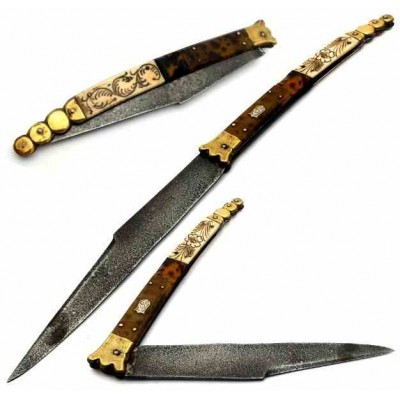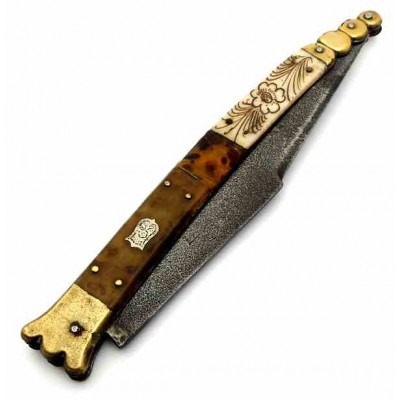Beauvoir knives originated in the famous city of Thiers (France) in the 19th century, according to the famous book "The Old Spanish Knife" written by the master Rafael Martinez del Peral y Fortón. In it, he indicates that they were knives between 17 and 24 cm long, usually made of shell with an inlaid shield and bone decorated with a brown painted floral pattern. The recess is usually in the shape of three circles, commonly called "rattlesnake tail." It is a punch or mark, one of the most common of its time in France.
The city of Thiers, recognized as the capital of French cutlery, reached its peak in the 19th century, a period during which more than 200 workshops produced high-quality knives and pocket knives, exported worldwide.
Although there is no specific information about a brand named "Beauvoir" operating in Thiers during the 19th century, it is possible that the Beauvoir family was involved in cutlery at that time. However, available sources do not confirm this connection. The current Coutellerie Jean Beauvoir, established in Thiers for over a century, specializes in the manufacture of single-piece stainless steel table knives, aimed at both professional catering and private individuals.
Furthermore, Erwan Beauvoir, a member of the family, has developed contemporary models such as the Aktinos, which fuses modern design with ancestral know-how, symbolizing the experience accumulated by the Beauvoir family over more than a century.
In short, although specific information about the Beauvoir brand in the 19th century is limited, the Beauvoir family has been associated with the cutlery tradition of Thiers for generations, contributing significantly to the artisanal legacy of the region.



